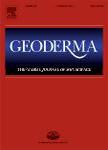版权所有:内蒙古大学图书馆 技术提供:维普资讯• 智图
内蒙古自治区呼和浩特市赛罕区大学西街235号 邮编: 010021

作者机构:CSIRO Land & Water Bruce E Butler Lab POB 1666 Canberra ACT 2601 Australia Alterra Univ Wageningen & Res Ctr Environm Sci Grp Wageningen Netherlands Zhejiang Univ Coll Environm & Resource Sci Inst Appl Remote Sensing & Informat Technol 866 Yuhangtang Rd Hangzhou 310058 Zhejiang Peoples R China CSIRO Agr Flagship Bruce E Butler Lab POB 1666 Canberra ACT 2601 Australia
出 版 物:《GEODERMA》 (国际土壤科学杂志)
年 卷 期:2016年第265卷
页 面:152-163页
核心收录:
学科分类:09[农学] 0903[农学-农业资源与环境]
基 金:Australian Government's Department of Agriculture's Filling the Research Gap Round 2 [1194194-91]
主 题:Proximal soil sensing Soil organic carbon stocks Visible-near Infrared spectroscopy Design-based sampling Regression estimator Model-based inference
摘 要:For baselining and to assess changes in soil organic carbon (C) we need efficient soil sampling designs and methods for measuring C stocks. Conventional analytical methods are time-consuming, expensive and impractical, particularly for measuring at depth. Here we demonstrate the use of proximal soil sensors for estimating the total soil organic C stocks and their accuracies in the 0-10 cm, 0-30 cm and 0-100 cm layers, and for mapping the stocks in each of the three depth layers across 2837 ha of grazing land. Sampling locations were selected by probability sampling, which allowed design-based, model-assisted and model-based estimation of the total organic C stock in the study area. We show that spectroscopic and gamma attenuation sensors can produce accurate measures of soil organic C and bulk density at the sampling locations, in this case every 5 cm to a depth of 1 m. Interpolated data from a mobile multisensor platform were used as covariates in Cubist to map soil organic C. The Cubist map was subsequently used as a covariate in the model-assisted and model-based estimation of the total organic C stock. The design-based, model-assisted and model-based estimates of the total organic C stocks in the study area were similar. However, the variances of the model-assisted and model-based estimates were smaller compared to those of the design-based method. The model-based method produced the smallest variances for all three depth layers. Maps helped to assess variability in the C stock of the study area. The contribution of the spectroscopic model prediction error to our uncertainty about the total soil organic C stocks was relatively small. We found that in soil under unimproved pastures, remnant vegetation and forests there is good rationale for measuring soil organic C beyond the commonly recommended depth of 0-30 cm. Crown Copyright (C) 2015 Published by Elsevier B.V.